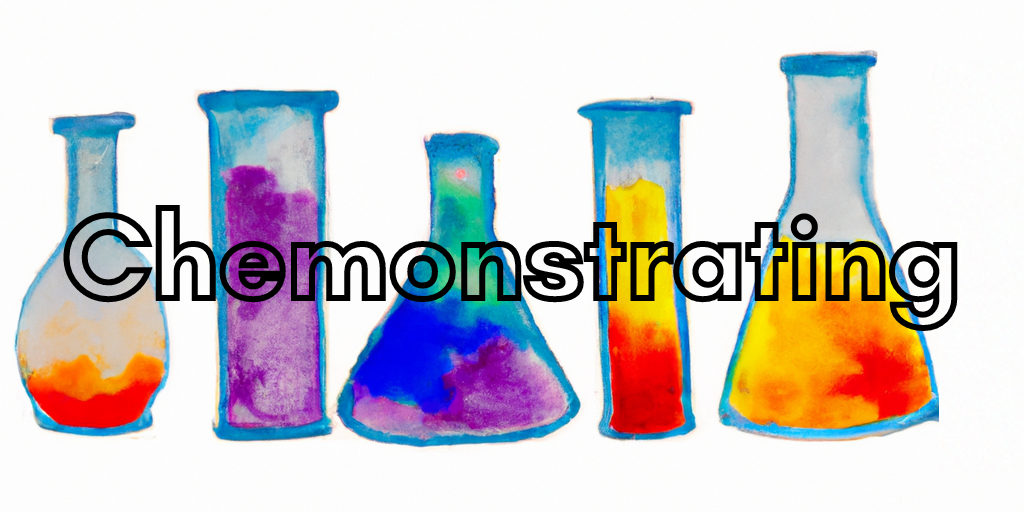Different Colored Complexes with the Same Ligands
Purpose:
To demonstrate that different metal ions (with the same ligands) exhibit different colors in a coordination complex.
Materials:
Reagents:
- 0.1M Cobalt nitrate (Co(NO3)2⋅6H2O)
- Conc. ammonia (NH3(aq))
- 0.1M Copper nitrate (Cu(NO3)2⋅2.5H2O)
Hazards and PPE:
- Copper nitrate is an oxidizer and serious toxin. Store and handle with care.
- Cobalt nitrate is an oxidizer, acute toxin, germ cell mutagen, carcinogen, and reproductive toxin. Store and handle with care.
- Concentrated ammonia can cause severe skin burns and respiratory irritation, and is an extreme aquatic toxin. Store and handle with care.
- Wear approved safety goggles and gloves.
Protocol:
Preparation
- Pour ~100mL conc. NH3 into a labeled 250mL beaker (separate than the four beakers that will be used in the demo).
- Add 100mL Cu(NO3)2⋅2.5H2O to two of the beakers and 100mL Co(NO3)2⋅6H2O to the other two.
Demonstration
- Add the conc. NH3 to one of the Cu(NO3)2⋅2.5H2O beakers and to one of the Co(NO3)2⋅6H2O beakers.
- Note that although the ammonia solution is clear, the colors actually get more intense (light blue to deep blue, pink to green blue).
Disposal:
- Waste should be collected in a properly labelled container.
Reactions:
- Cu(H2O)42+(aq) + 4NH3 ⇌ Cu(NH3)42+(aq) + 4H2O(l)
- Co(H2O)62+(aq) + 6NH3 ⇌ Co(NH3)42+(aq) + 6H2O(l)
Citations:
- Summerlin, L., Borgford, C., & Ealy J. Chemical Demonstrations: A Sourcebook for Teachers, Volume 2, Second Edition, 1988.
Videos:
